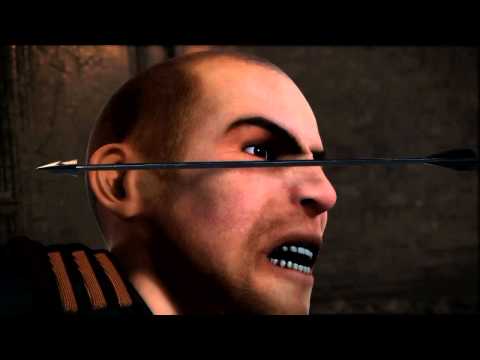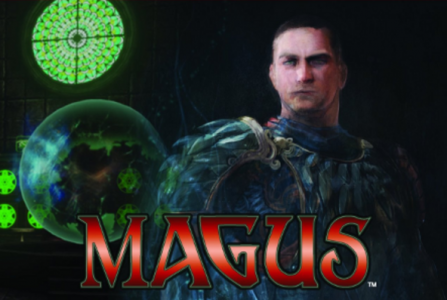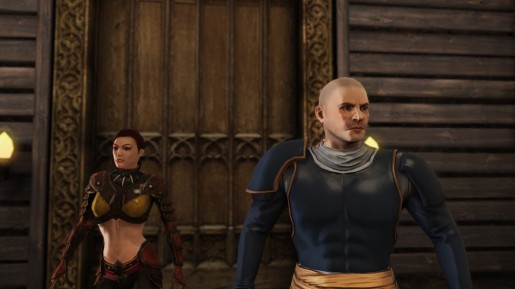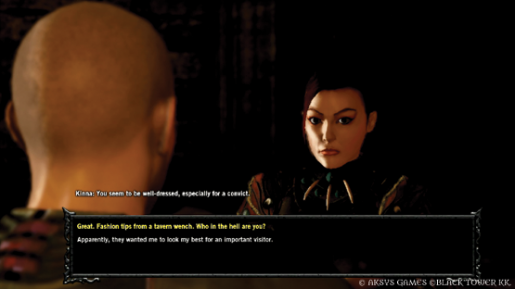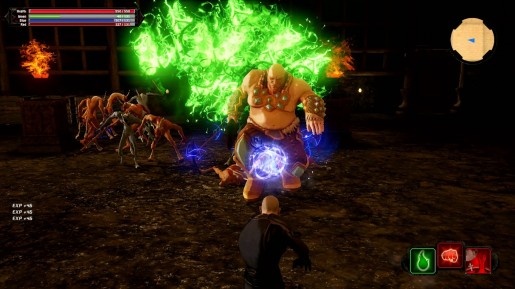Aksys Games has grown to prominence over the years by translating and localizing various Japanese games across various platforms, but announced last June a game known as Magus, their first co-developed game. In a combined effort with relative newcomer Black Tower, the two have brought the PlayStation 3 exclusive to life as a digital download from the PlayStation Store. However, this one might have been better off dead on arrival.
From the very second you turn on this game and get to the main menu, you may get a sense of how this game is going to be. You see the absolutely terribly designed main character Magus just standing there with the camera constantly losing focus on him, which causes a blurry effect that seems to be a common theme with the character design in this game. If you don’t start right away, you get the opportunity to see an opening cutscene, but it only disappoints further. Magus’s design is about as uninspired as can be and he just outright looks bad, almost like something from the early days of the last generation of consoles at best. The character proportions are off with a torso that looks almost concave and the facial design is blurred in areas.
This is the point where you actually start the game in a dungeon and meet your companion for the game named Kinna, a fellow prisoner who has lost her memory. The game tries to take elements from good role-playing games, like Mass Effect, with the ability to choose between a couple different choices in conversations, but it is completely useless in this game. Nothing at all seems to change from your various decisions and your character himself never even speaks, it just has the response to what you pick. This just seems lazy and only works in games like The Legend of Zelda where a silent protagonist is established, and this one obviously isn’t meant to be silent. There are also times where you have one option to choose from, when they could have just had the conversation move forward on its own, but you still have to choose it anyways.
It’s almost as if the developers wanted to trick us into thinking we had control over what happens in the game, when the conversation choices were merely a ripoff of games that actually add weight to these decisions. Instead, we just get to pick between usually two options, one that seems nice and the other that usually includes some sort of cuss word for absolutely no reason. The only times these type of conversations worked at all was when you were talking to Kinna in the main hub and could inquire about information by picking a few different options.
The combat is very simplistic but gets tiresome almost right away. Basically, there are three magic types in the game based on three colored stones: green, blue, and red. You are able to switch between these three types and each have a rapid-fire like move and a stronger move that requires a little bit of a recharge. However, all you will pretty much be doing is holding down R1 button the entire game. There are special abilities that you can gain access to the higher you level up, but I never really used but a couple and found myself having no trouble against enemies at all.
The point of a progression system when leveling up through equipment and special abilities is so you can plan on how to take down difficult enemies and bosses, which usually requires at least a little level grinding. However, in Magus that is far from the case. By the time I was finished with the game, which wasn’t very long at all, I was pretty much leveled completely up, and I certainly didn’t do any level grinding at all. Like the conversation system added into this game, the RPG style level-up system seems completely useless and unneeded. It tries to pass itself off as an role-playing game, but it really just seems like more of an imposter by the time you are through.

